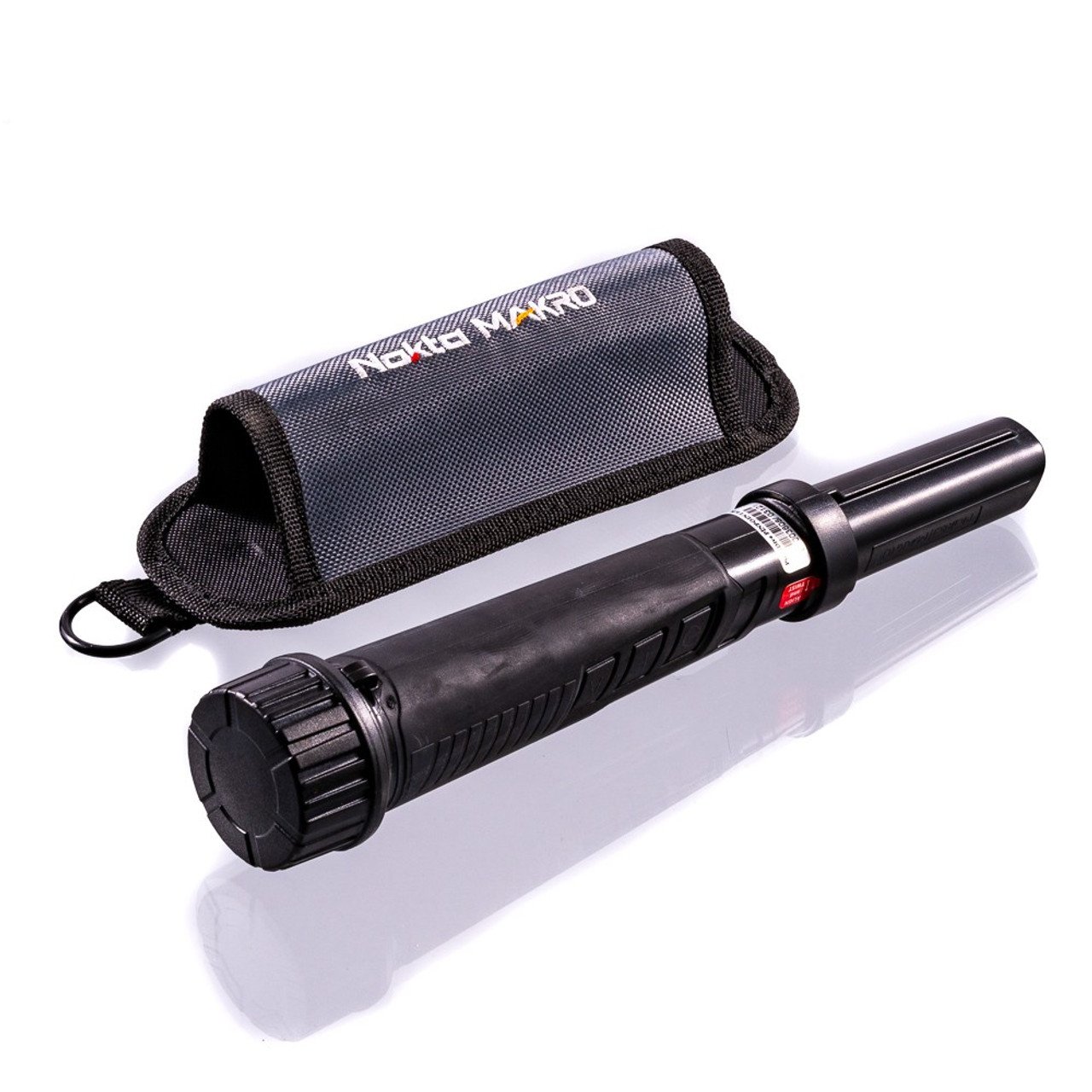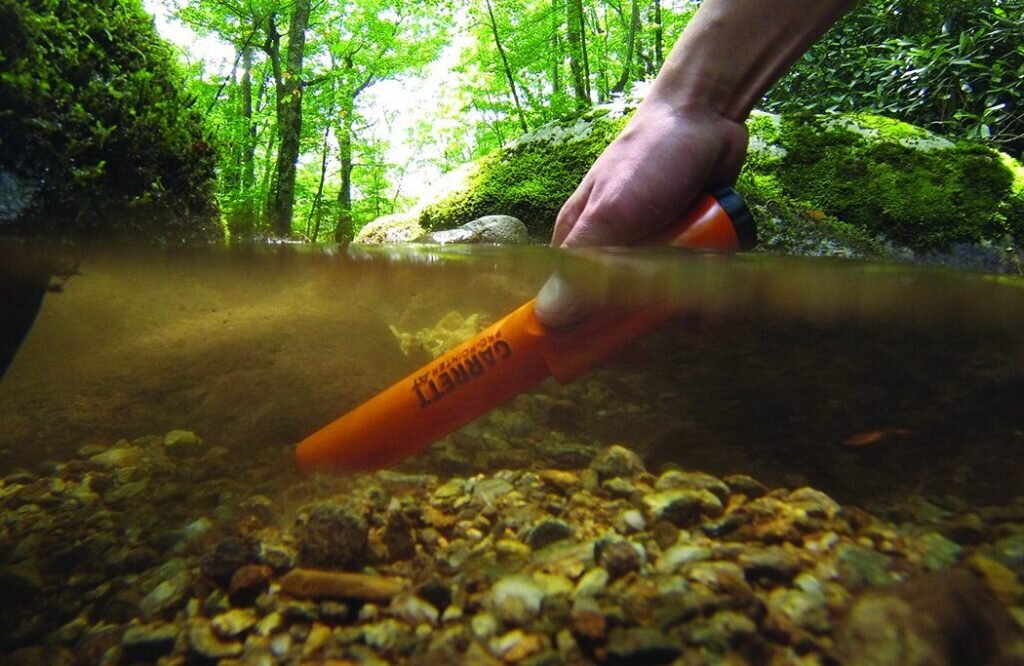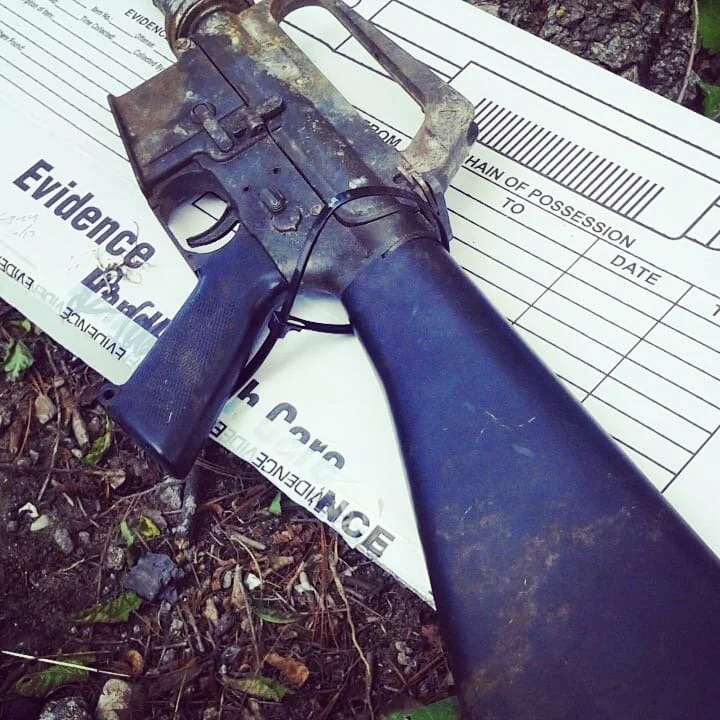Do I Need A Pinpointer?
If you are out enjoying the hobby of metal detecting and trying to locate your target that is hidden in the dirt, then having a pinpointer will certainly be a beneficial tool to help aid you with that task and you’ll want to make sure it’s part of your metal detecting arsenal. Not only will a pinpointer help you locate your target, but a pinpointer will also provide several other advantages as well.
**DISCLAIMER - As an Amazon Associate I earn from qualifying purchases. The links in the article are affiliate links that help support this blog and my channels. Metal Detecting Life is supported by you, the readers! When you purchase something I recommend via my links, I may get an affiliate commission (terms of service) — but it never affects the price you pay. Cheers!
Increase Speed of Recovering Targets With A Pinpointer
A pinpointer will greatly increase the speed at which you locate, find, and recover your target from the bottom of a hole or inside a cut plug that you’ve flipped over.
How To Cut A Plug Metal Detecting
Learn how to cut a perfectly clean plug when out metal detecting so that you don’t leave any mess and retrieve targets quickly.
This increased recovery speed is also because odds are that once you open up the hole you’ve just detected, your target will not be laying there in plain site. Most likely, the target will still be covered by dirt at the bottom of the hole, in the side wall, or hidden somewhere in the plug that you just flipped over between the roots of the grass.
The target could be anywhere in the hole, plug, or removed dirt. Using a pinpointer quickly allows me to scan and retrieve the target safely.
Using a metal detector like one of the ones from my recommended gear page will certainly help you find the general location and even depth of your target, but because the coil is so big, the target could be anywhere within the space of your coil.
Having the right tool for the right job is always a plus.
The pinpointer will allow you to quickly zero in on the exact location of the target because it is only detecting a small, fine point of the area and generally only makes a response signal when you are very close to the target. It is this “closeness” to the target that makes a pinpointer a very effective tool.
Pinpointers Allow For Cleaner Plugs
Utilizing a pinpointer will assist you in making sure your plugs are cleaner. This is simply because you won’t need to be digging excessively large holes, moving dirt all over the place, and having the ability to search the bottom of a plug with surgeon-like precision.
Using a pinpointer allows me to easily find my target and retrieve it without leaving a big mess of dirt everywhere.
In a past life, I was personally guilty of leaving behind messy looking holes because there was evidence of fresh dirt spread out all along the service of the ground around my cut plug. This was because I would take handfuls of dirt from the bottom of the hole and wave it over my detector coil to see if I had the target in my hand. If not, I would toss the dirt aside and repeat the process.
Other times I would have to rip open the plug itself when I cut deeper than the target was located. Banging and ripping open the plug would cause dirt to go flying as I searched for the target held within.
Had I just had a pinpointer, the process would have been much cleaner as I could have located my treasure precisely in the hole and then extracted it without causing such a mess.
NoktaMakro Pulse Dive
Light and portable, this 2-in-1 device is a must-have tool for any detectorists arsenal. The patented design allows you to come from pinpointer to scuba detector with the turn of the handle, and stays waterproof up to 60 meters or 200 feet. The Pulse Induction technology is powerful enough to detect in salt water or any type of soil.
Garrett Pro Pointer AT
Completely submersible (up to 20 feet) and features one-button power operation. Also available with Z-link technology.
Minelab Pro-Find 35
Complete with adjustable sensitivity, two mode operation, water resistant construction and Detector Interference Free (DIF) technology.
Prevents Damaging Your Treasure
Having a pinpointer on hand will help prevent you from possibly damaging your treasure. Because your target could be located at various depths, on edge, and anywhere within your metal detector’s coil circumference, jabbing a shovel blindly in to the ground as you attempt to recover the target could pose as a risk.
Stabbing your shovel blindly in to the dirt without pinpointing could prove to be costly!
Utilizing the pinpoint feature on your metal detector will help you narrow in on the possible location of your target, so once you begin to dig your plug and have opened the hole, that is the time to immediately get out your handheld pinpointer so that you minimize the risk of damaging your find as you begin to dig any further.
For example, if your target is deeper in the hole once you “pop” the plug and you don’t see it upon initial inspection, most people without a pinpointer would start jabbing and digging into the hole deeper. Not knowing exactly where the target is could make it very easy to end up scratching the coin with your shovel.
This barber dime suffered a nice scratch across the face of it because time was not taken to use a pinpointer and excavate it properly.
Using your handheld pinpointer as soon as the hole is open would allow you to know if the target is deeper or just off-center and in the side wall. Now you can carefully dig around the pinpointed area and retrieve your target without scratching or damaging it because you know precisely where it is in the hole.
Pinpointers Are Great For Finding Small Targets
Using a pinpointer is great for finding small targets hidden in the dirt, the grass, and even behind walls or under floors because of how sensitive the pinpointer can be. Most pinpointers generally have no discrimination settings and therefore, will sound off on any metal object whether copper, gold, or even iron.
Even in the muddiest of conditions a pinpointer is a very useful tool for recovering small targets like this dropped bullet.
It is possible to adjust the sensitivity settings within your pinpointers functions so that the distance at which the pinpointer will be able to read a target can be increased or decreased based on your preference.
I find that a setting of 1-2 inches is ideal when pinpointing for smaller targets such as a coin. Be sure to read your pinpointer’s user manual to understand how to set the sensitivity.
Use A Pinpointer Underwater
It is possible to use a pinpointer underwater depending on the model. One pinpointer that is waterproof up to a depth of 20 feet is the Garrett Propointer AT (linked above). This pinpointer can be useful if you are metal detecting streams or creeks and the flowing water makes it difficult to see the object.
While it will be difficult to hear the pinpointer sound off in the rushing water, the Garrett Propointer AT settings can be switched to vibrate so that as you get near your target, you’ll actually feel the vibrations of the pinpointer in your hand. Now there is no longer a need to listen for a tone over the babbling brook.
You can use the Z-Lynk version to wirelessly hear targets both in the dirt and underwater!
If you still want to hear a tone however, you can purchase the newer Garrett “Z-Lynk” Propointer AT model and it will send the audio of the pinpointer back to your headphones as long as they are also Z-Lynk compatible.
Summary
While a pinpointer is just one more thing to carry, using a pinpointer as a complimentary accessory while metal detecting provides many advantages that help in finding your next treasure.
All of these advantages will make your pinpointer one of your most valuable tools in your metal detecting arsenal and you won’t want to leave home without it.
If you don’t currently use a pinpointer, how to you locate and retrieve your target when metal detecting? Eyeball it? Sifter? Probe? Something else? Drop an email and let me know!
*As an Amazon Associate I earn from qualifying purchases.




















